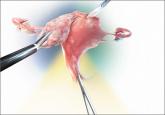6. Dagraca J, Malladi V, Nunes K, Scavone B. Outcomes after institution of a new oxytocin infusion protocol during the third stage of labor and immediate postpartum period. Int J Obstet Anesth. 2013;22(3):194–199.
7. Sheehan SR, Montgomery AA, Carey M, et al. Oxytocin bolus versus oxytocin bolus and infusion for control of blood loss at elective caesarean section: double blind, placebo controlled, randomised trial. BMJ. 2011;343:d4661. doi:10.1136/bmj.d4661.
I deeply appreciate the very important clinical observation provided by the Summa Health System team. Implementation of a standardized 5-hour protocol of oxytocin administration following delivery resulted in a reduction in the rate of diagnosis of PPH following vaginal delivery, but not cesarean delivery, and a reduction in the use of adjuvant misoprostol, caboprost, and methylergonovine maleate. The quality improvement intervention initiated by the Summa Health System team and their ability to assess before and after outcomes demonstrates how high-quality clinical networks can develop and disseminate best practices, thereby improving the health of all the pregnant women in our care. Thank you for sharing this important clinical observation with our readers.
I'm sorry to say it, but your piece on morcellators is slanted. Many of us believe the FDA is wrong. The incidence of occult sarcoma came from nowhere. In properly selected, evaluated, and surgically managed cases, the use of an open power morcellator is an excellent option and the risks of a bad outcome are extremely small (especially the risk of worsening an occult leiomyosarcoma). Incidentally, we face the same risk of finding and possibly worsening an occult cancer in every gynecologic surgery we do.
Possible spillage, contamination, or outright tumor rupture is possible no matter what route or incision size. Minimally invasive surgeons understand the risk−benefit ratio very well. We use our judgment and patient informed consent in every case and should not be unnecessarily obstructed by government agencies. The right to choose the appropriate tools and techniques should remain in the capable hands of qualified surgeons!
The controversy here is reminiscent of the issues brought up about breast implants in the 70s, IUDs in the 80s, estrogen in 2004, vaginal mesh in 2012, and robotics and hysterectomy approach recently. Show me some real data that are convincing against the use of morcellators, or support the physician’s choice in how to care for our patients.
Michael Swor, MD
Sarasota, Florida
I appreciate Dr. Swor’s response to the article on actions by the FDA and various hospitals to limit the use of power morcellation during hysterectomy and myomectomy. That article was not endorsing those actions, nor was it condemning them—it was simply a report of the latest events in a sea change taking place in minimally invasive gynecologic surgery.
Since the article was published, new data have become available on the likelihood of occult uterine malignancy among women who undergo minimally invasive hysterectomy with electric power morcellation. Wright and colleagues found a rate of uterine cancer of 27 cases per 10,000 women at the time of the procedure.1 That figure translates into one case of undetected uterine cancer in every 368 women undergoing hysterectomy.1
In a two-part series on tissue extraction at the time of hysterectomy and myomectomy, Dr. Jason Wright, the author of the study just mentioned, and other expert panelists discuss this issue in more depth.2,3 They also note, as does Dr. Swor, that spillage, contamination, or outright tumor rupture is possible regardless of the route of hysterectomy.
References
1. Wright JD, Tergas AI, Burke WM, et al. Uterine pathology in women undergoing minimally invasive hysterectomy using morcellation [published online ahead of print July 22, 2014]. JAMA. doi: 10.1001/jama.2014.9005.
2. Advincula AP, Bradley LD, Iglesia C, Kho K, Wright JD. Tissue extraction during minimally invasive Gyn surgery: Best practices for an environment in flux. OBG Manage. 2014;26(9):44–51.
3. Advincula AP, Bradley LD, Iglesia C, Kho K, Wright JD. Tissue extraction during minimally invasive Gyn surgery: Counseling the patient. OBG Manage. 2014;26(10):41–45.
Share your thoughts on this or other articles! Send your Letter to the Editor to rbarbieri@frontlinemedcom.com. Please include your name and the city and state in which you practice.



